Right about now, it’s high summer and I’ll bet you’re wondering how to lower your electric bill and save some money. Cash seems to be flowing out the door to pay for remaining summer camps, back-to-school junk, vacation bills, and sanity-saving air conditioning. Anyone else?
This post solely focuses on saving money on your electric bill. For ideas to save money and lower bills on overall home expenses, read this post:
How to Lower Bills on Home Expenses
I’ve searched “how to lower your electric bill” and read the lists of ideas Google wants me to try. But let’s be honest. It’s August: it’s hot as hell and I’m not sacrificing AC. Plus, my kids need school clothes and new shoes and 40,000 glue sticks. I want to cut the bills, but I also want easy options. Here’s the plan.
Gameplan to Lower Our Electric Bill
The top articles all recommend the same things to reduce household bills. I bet you’ve read them, too. Personally, I don’t have a gym membership to cancel and I have little time to install a new energy-saving thermostat. (But if you do, here’s what I recommend – Save Energy and Cash With a Smart Thermostat)
So I’ve embarked on my own experiment to cut our expenses this month, especially focusing on the electric bill. I made a list of easy ways to be more energy efficient and will track my changes and compare them to July’s bill. In September, I will write another blog post and follow up on what works and what isn’t worth it.
I will start this project on Monday, August 7th and I’ll aim to wrap up in about 30 days. Our meter reading is recorded around the 7-10th of each month, so I hope to match the billing period. By the way, we won’t change our routine in any drastic way. My entire goal is to figure out how to lower your electric bill without going crazy.
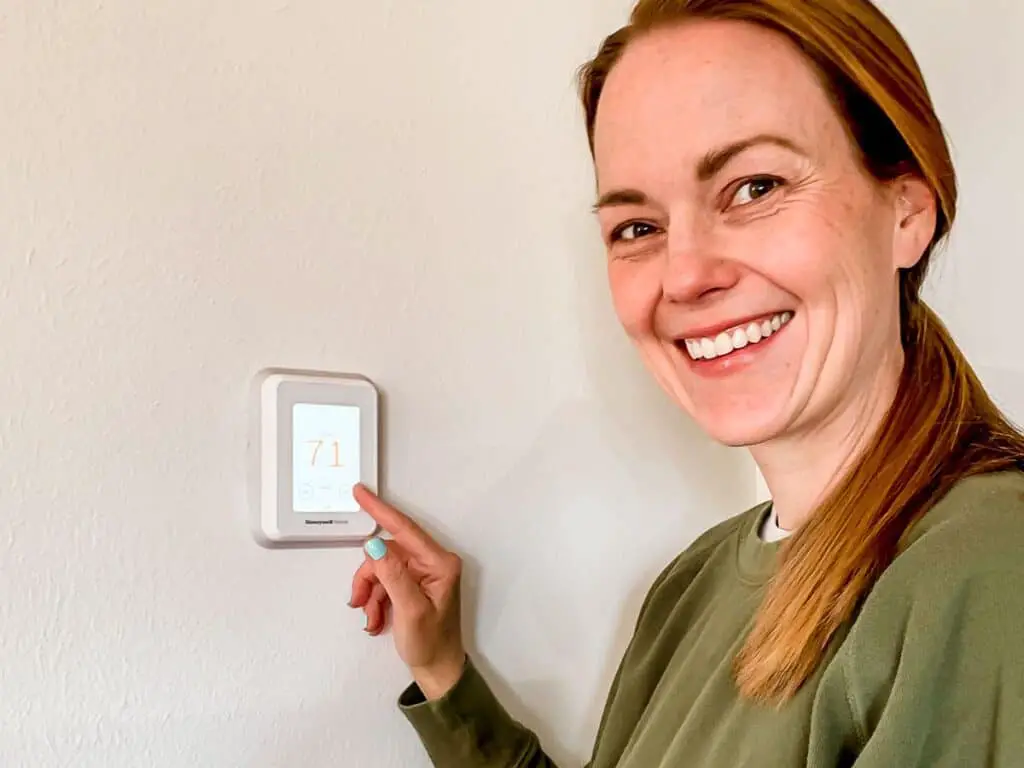
How to Reduce Energy Usage
Aside from a mortgage or rent, utilities are the next predictable expense. Air conditioning is a huge chunk of the utility budget, so I’ll address that in the next section. Here are other ideas to lower your electric bill.
Unplug Devices
We tend to leave everything plugged in 24/7 but supposedly, appliances draw a tiny amount of electricity, even when turned off. As part of my experiment, I’m unplugging everything that’s easy to reach unless it’s essential to leave plugged in, like the refrigerator. I’m curious to see if this amounts to any significant savings on our energy bill. I’ve always heard that it will, so stay tuned and I’ll let you know if I notice.
I also ordered this Kill A Watt device to measure the electricity drawn by our appliances and other devices. It plugs in between the outlet and your device and measures the electricity usage. This is a great way to identify which items are really worth unplugging!

Turn Down Hot Water Heater Temperature
Check your hot water heater temperature gauge. Factory settings often start out at 140 degrees, but you can reduce it to as low as 120°, which will impact your energy bill. Don’t go lower than 120° or you’ll risk bacteria growth.
As for reducing actual hot water usage, the biggest offender is the washer. Jump to the laundry section for tips.
We also take evening showers in the summer and use lukewarm or cool water anyway. It’s a small but helpful way to use less hot water. If you hate colder showers, just try to take shorter showers.
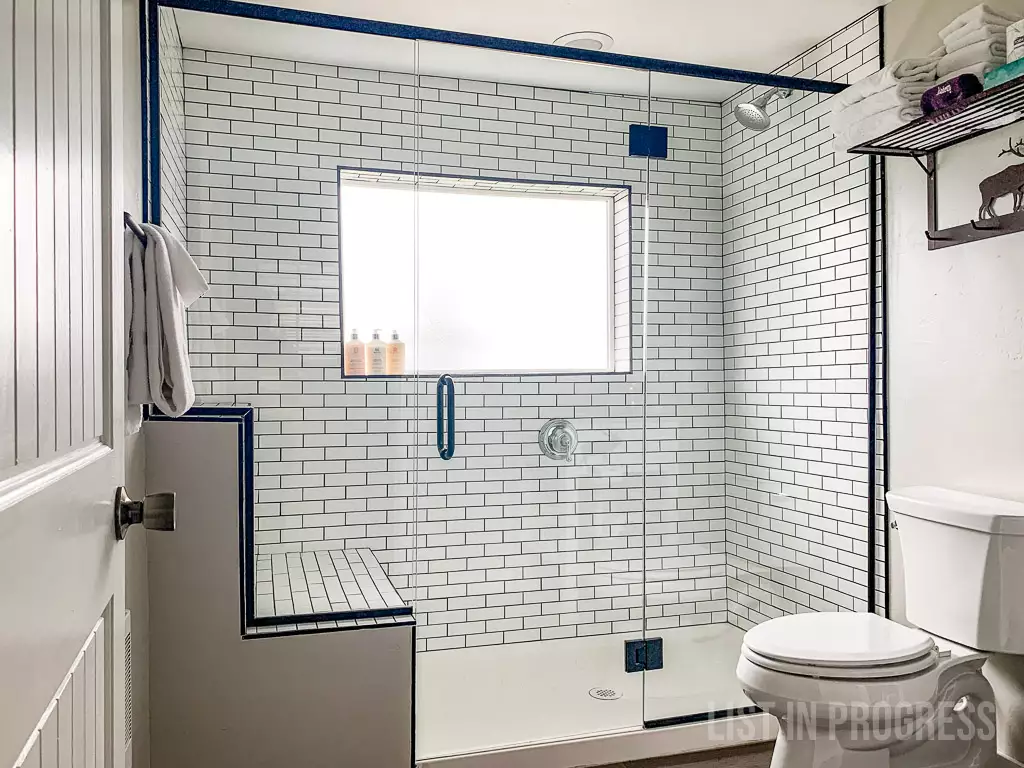
Air-Dry Your Dishwasher Loads
It’s more time/energy efficient to use your dishwasher than to wash dishes by hand. However, if you can let your dishes air dry at the end of the cycle, rather than heat-dry, that saves electricity.
Run Appliances at Off-Peak Hours
Google off-peak electricity hours near me to find out when your local company schedules their discounted rates. Xcel uses this handy graphic to show our peak and off-peak hours. You must have a special meter installed to record usage during designated hours.

Xcel bills our off-peak rates from 7:00 p.m. – 1:00 p.m. during the week and all day on weekends and holidays. If I avoid running the dryer (the worst offender) from 1-7 p.m., I’ll save over 50% compared to the peak electricity rates. I’m also trying to run the dishwasher during the off-peak hours. While it’s not always possible to stick to that schedule, I will make an extra effort this month.
Spoiler: jump to the 30-day update here to see how we did!
Fridge and Freezer Tips
High five if you already know and do these things:
Keep the freezer full. If your freezer is packed with frozen items, it’s more energy efficient. When it’s full, there’s less space for airflow and more frozen items to help maintain the temperature. If you only have ice cubes in a cavernous space, it’s less energy-efficient because the freezer has to cool down the air every time you open it.
Cool your leftovers before storing them. Don’t make your fridge work harder to cool down hot foods. Let them cool to room temperature before storing them.
Maintain optimal temp settings. Check out this stat: your fridge uses 25% more energy if it’s set 10 degrees below the recommended 35-38° range. I don’t know if that applies to the freezer too, but the range should be 0-5° for the freezer. Here are more tips for refrigerator efficiency. I stuck meat thermometers in my fridge and freezer to check the temps and realized I should adjust both sides!
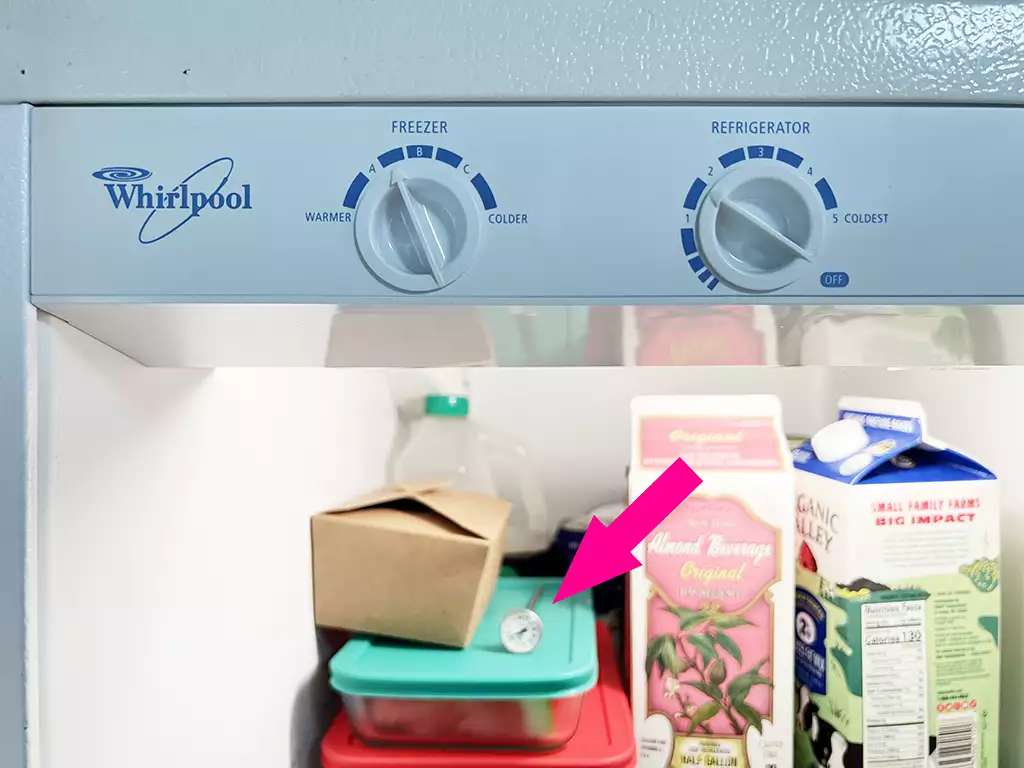
You Might Also Like:
How to Lower Bills on Home Expenses
Save Energy + Cash With a Smart Thermostat
Amazon Insights: Is Prime Day Worth It?
How to Reduce AC Usage and Stay Cool
If you run air conditioning, there’s not much to be done about cutting electricity bills in the summer. Most systems run on electricity (even if your furnace is gas-powered for heat). I’m not about to suggest cutting the AC, but here are some ways to help your home stay cooler so your AC unit might run less and/or more efficiently.
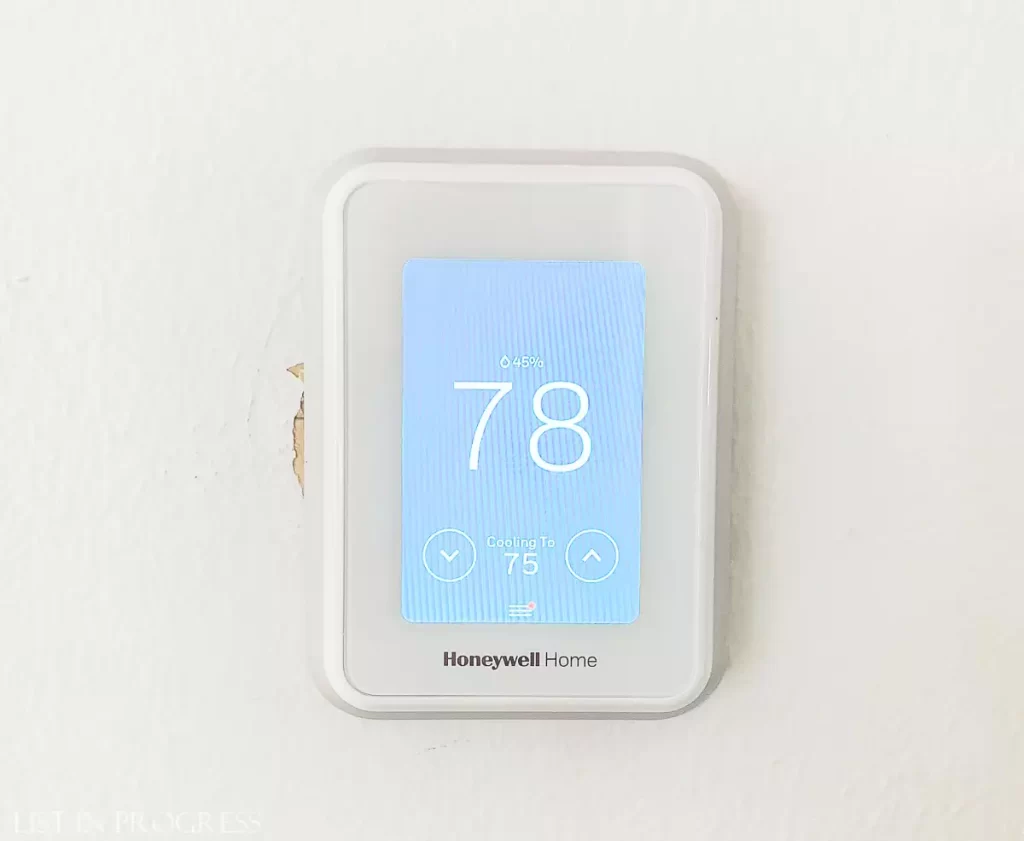
Capitalize on Night Air
If you can tolerate having windows open overnight, let the windows draw in cooler air while you sleep. This might just be an occasional option in hotter climates, and perhaps not possible for you in the summer. We have AC units in our bedrooms, so we open the windows everywhere else for cooler airflow overnight. I’m researching a whole-house fan to maximize this strategy in the late spring and early fall. Do you have an attic fan? If so, you’re lucky!
In the morning, pay attention to the outside temperature, and as soon as it’s close to your indoor temps, close up the house. Draw the blinds wherever you can and you’ll preserve that cooler indoor air for a bit longer. This routine takes a little effort, but you’ll have a cooler home and delay the start time of your central air, if you have it.
Install Blinds
If you don’t already have blinds or window shades, install them. Or just hang curtains! Drawing blinds or shades in rooms where you don’t spend time will help the house stay cooler during the day. I wrote a whole post on affordable window treatment ideas here:
Budget-Friendly Window Treatments
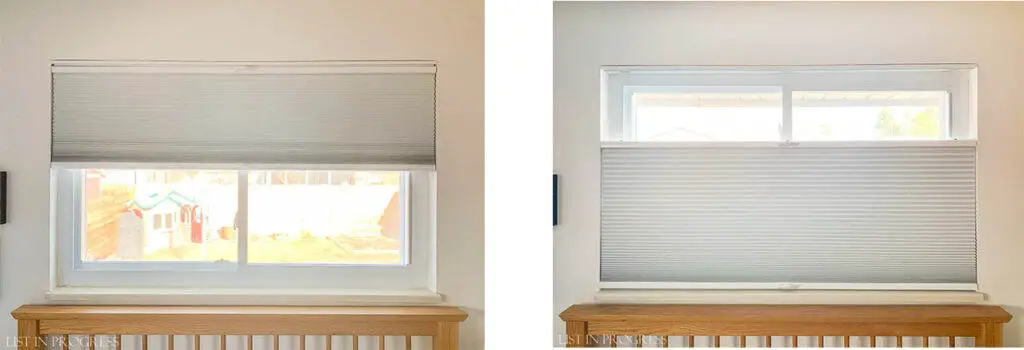
Blackout shades are the best option for blocking light, no surprise, but light-filtering shades also work to keep temps down. I installed this 5% sheer solar shade in our south-facing family room to do double duty. It keeps the room cooler by filtering the light and it also protects our leather couch from discoloration.
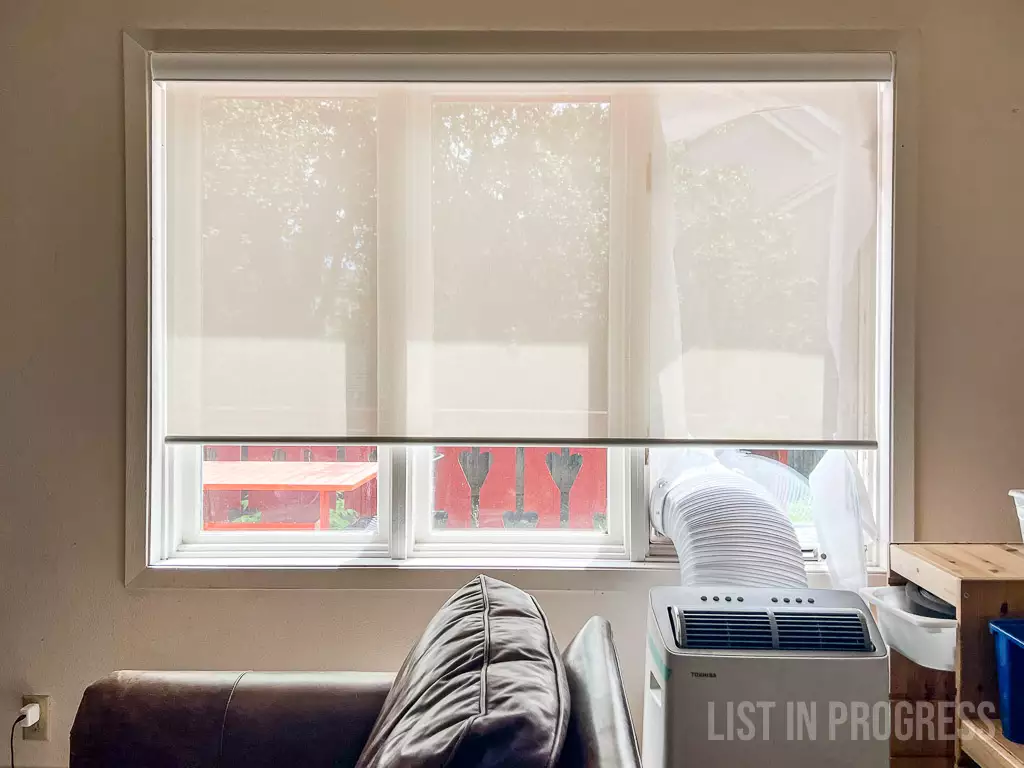
DON’T TRY: This DIY AC Project
Don’t fall for this DIY AC unit. I tried making this last year and it was really just another fan. Worth a shot but it didn’t cool anything down for us. There are a ton of YouTube tutorials for this idea, but it was a big fail.

You Might Also Like:
How to Lower Bills on Home Expenses
Save Energy + Cash With a Smart Thermostat
Amazon Insights: Is Prime Day Worth It?

Laundry Tricks to Save Money
Laundry is a constant activity in our house, as it probably is in most homes with kids and pets. Here are a few tips to cut the bills in this category.
Wash in Cold Water
Amazingly, 90% of the energy used by the washer goes into heating the water. Cold water uses 1/10th of the energy that hot water does, and it’s better for your clothes. Cold water preserves colors, fabric texture, and sizing; it won’t shrink your favorite tee. This is not always practical (hello, smelly sports clothes!), but washing laundry in cold water is an easy money-saver with the right detergent.

Check Out Our Remodeled Denver House Here
The best cold water laundry detergents are subjective since their efficacy depends on your water quality. Some plant-based detergents don’t work as well in cold water; you might need to experiment. Sometimes powder or pod detergents won’t fully dissolve in cold water, but you could start with a little warm water to nudge them along.
I have been using this Ariel powder detergent because it’s crazy cheap and I’m sick of plastic laundry bottles. It works pretty well on a standard load and I love the fresh scent.

Other good cold water detergents that we’ve tried: Persil, Tide, Biokleen, and Seventh Generation. In our house, Persil and Tide work the best on stained and smelly clothes; we buy Persil ProClean Free & Sensitive for sensitive skin issues. Click on any of the images below to see them at Amazon.




Persil ProClean Original is so good, probably the best I’ve used, but I don’t like the scent (are you sensing a theme to my detergent pickiness yet?). Target sells Persil ProClean Original for a better price than at Amazon, but they no longer sell the scent-free version. Here’s what the original scented version looks like:

Ditch the Dryer
One of the best ways to lower your electric bill is to cut back on dryer usage. Air-dry everything possible in your laundry life. It’s better for your laundry and free. Alternately, run the dryer during off-peak electricity hours. If you missed that note, jump to this section about off-peak rates.
We already use drying racks like these and I just hung a clothesline this month for sheets and larger items.

By the way, Target has the best deal I found on clothespins: 50 clothespins for $1.25.
This retractable drying rack is another space-saving dryer alternative that I might install this month. I bought it for our last laundry room remodel and ran out of time.
Read About Our Denver House Remodel

Somewhat-Ridiculous Ideas That Work
I’m letting it all hang out today. I have tried the following ideas before and will be doing them again this month. These save both electricity and gas, depending on your HVAC system. They also keep your home cooler.
Use a toaster oven outside for all baking. If you don’t turn on the “real” oven, you won’t heat up your house, right?
Ban hot baths on hot days. Our kids love a hot bath any day of the year, but I’ve put the kibosh on hot water baths this month, for the sake of my experiment. This cuts down on both hot water and hot air in the bathroom.
Blow cool air up from the basement with a fan. Sometimes we set this up when we’re airing out the house in the early morning. We have an old industrial fan that moves a LOT of air.
UPDATE: 30 Days Later – September 2023
Here’s the update after trying my experiments for 30 days to use less electricity and lower our electric bill.
What I changed:
- I checked all unnecessary appliances’ energy draw with the Kill-A-Watt device. Nothing drew power unless it was in use. Urban legend?
- We hung a clothesline and air-dried more laundry than usual (we normally use these drying racks for a lot of our clothes).
- I ran 90% of our dryer and dishwasher loads after 7pm to make use of off-peak electricity rates.
We saved about $46 in August 2023 compared to August 2022. Not the shocking savings I expected. You’ll never guess what went wrong…
We don’t have the special electric meter installed yet. Imagine my surprise when I revisited the Xcel website to better understand why our bill wasn’t under $100. The website goes into detail about how peak and off-peak usage is billed – but it doesn’t mention that you must have a new smart meter! Well, eventually it does, but that’s halfway down the page and I think it’s totally misleading. Here’s the website about time-of-use pricing. What do you think?
Xcel says we should get a smart meter installed by the end of 2023. I will try this experiment again when I can really compare with off-peak rates.
Which Tip Will You Try This Month?
Stay cool!
You Might Also Like:
How to Lower Bills on Home Expenses
Save Energy + Cash With a Smart Thermostat
Amazon Insights: Is Prime Day Worth It?








